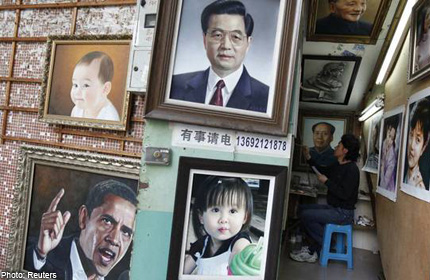
They are not the usual mass production factories seen in China. And they are very unlike the factories where workers toil 24/7 to produce smartphones, TVs and other products for the markets of the world.
In these factories, imagination is key.
In Dafen, a suburb of the coastal city of Shenzhen in China's south-eastern Guangdong province, thousands of artists labour day and night to reproduce famous paintings for the mass market, the Mail Online reported.
Known as Dafen Oil Painting Village, the district is believed to be the largest mass producer of oil paintings in the world.
Artists here manufacture some 60 per cent of the total global volume in such knock-off canvases, according to China Daily.
Many of the artists are trained in the required techniques at Chinese art academies. But these artists have not been able to make a living by selling their own works.
Replicas
So they produce dozens of replicas of iconic paintings daily to make ends meet.

Prices on DafenVillageOnline.com, a website set up to sell works directly to consumers overseas, average about US$60 (S$75), but many are no doubt passed on wholesale for far less, to be sold in many countries for similar prices.
Times, though, are not rosy for the anonymous artists who toil away in such factories.
The seemingly endless economic troubles in the West are hitting them hard because they have been banking on the West to sell the paintings.
While in the past, artists produced endless copies of iconic Western paintings by the likes of Van Gogh, Monet and Picasso, these days, they have had to adapt to cater to customers closer to home.
A local newspaper report seen by the BBC claimed that exports fell by more than half in the first half of last year alone, after a collapse in Western orders.
One artist, Mr Weng Yugo, 27, told the broadcaster that nearly all his Western customers had lately been replaced by Chinese and he had been forced to adapt his work.
"There is a difference in taste," BBC quoted him as saying. "I'd say that Westerners prefer classical pictures, which tend to be very dark. Chinese people like bright colours."

Get The New Paper for more stories.

